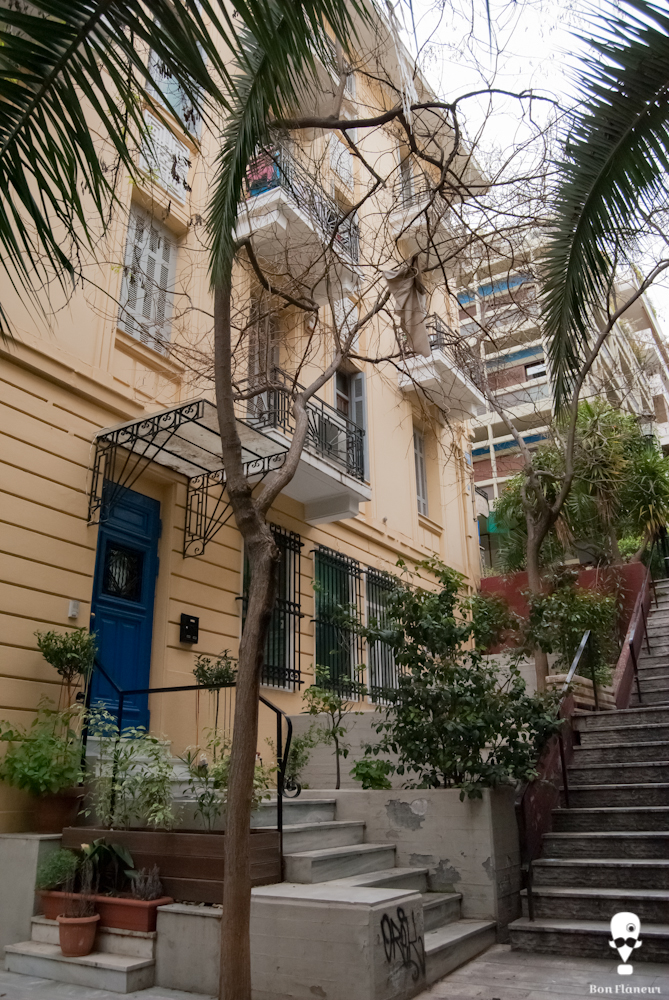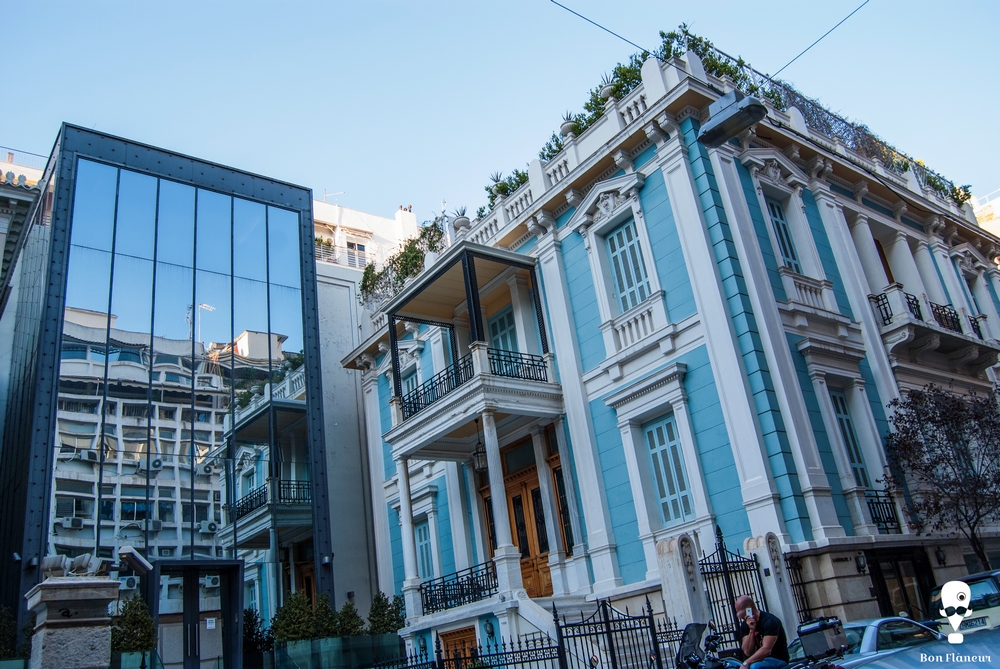Exarchia- Kolonaki
Towards Dexamenis Square in Kolonaki district.

Towards Dexamenis Square in Kolonaki district.
Home > Athens > Society > Urban contrasts > Centre > Exarchia- Kolonaki



















The neighbouring of Exarchia and Kolonaki is the epitome of urban schizophrenia. These two areas could not be more disparate. When one crosses Skoufa and Navarinou Streets, one can immediately sense the difference. On one side is Kolonaki, densely built but neat and trendy, with fashionable residents; on the other, the “anarchist” Exarchia area, its antithesis, filled with graffiti, people from all backgrounds and active students.
Kolonaki is an expensive area, famous as a shopping district and the Athenian synonym to consumerism. This is where many offices and residences of prominent doctors, lawyers, politicians and businessmen can be found. A popular phrase that captures this concentration of Athens’ aesthete bourgeoisie in the area is “people and Kolonaki”. Exarchia on the other hand, is considered to be a centre for ideological fermentation, challenging authority and intellectual debate. This is evidenced by the large number of publishing houses and bookstores in the area as well as by its anarchist squats. Equally important to this area’s vibrant political, cultural and social character, are its makeshift self-managed parks created by residents. Exarchia is inhabited by middle and lower income groups and students that enhance its bohemian atmosphere. The graffiti in Exarchia are exceptional. Some are known internationally. The graffiti function as a kind of urban public diary, recording the pulse of the city and the times. A likely social cause for the predominance of graffiti in Exarchia and around Athens is the lack of open space, the need for public expression of its youth and their struggle to empower themselves and to reclaim public space.
Vassilopoulos Ch., (2012), Τα άγνωστα Εξάρχεια, [The Unknown Exarchia], Time Machine, ΕRΤ
http://www.youtube.com/watch?v=taiHLajaYns
Τελευταία επίσκεψη 24/3/2013
Katsidi D., (2010), Το Graffiti ως πολιτισμικό στοιχείο : κοινωνικές αναπαραστάσεις των δημιουργών και σημειολογία των εργων τους, [Graffiti as a cultural element: socila representations of the creators and the semeiotics of their works], Ph.D. Panteion University
Mikropoleis, (2012), Εξάρχεια, οι τοίχοι, [Exarchia, the walls], ERT
Scientific editors’ field observation
Share